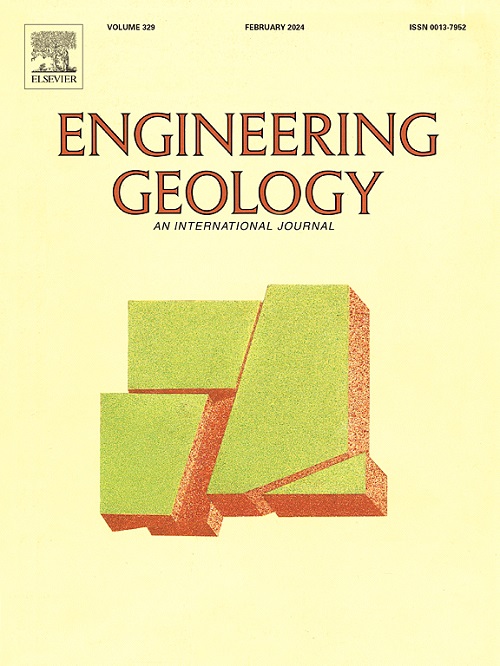DEM simulations of particle dissolution effects on the passive earth pressure of retaining walls
IF 6.9
1区 工程技术
Q1 ENGINEERING, GEOLOGICAL
引用次数: 0
Abstract
Assessing passive earth pressure is fundamental in geotechnical engineering practice. Mineral dissolution in the soil can reduce the soil strength, causing an overestimation of passive earth pressure in design. In this study, the effect of dissolution on passive earth pressure on retaining walls is investigated by using discrete element method, taking into account three modes of motion: translation (mode T), rotation around the wall bottom (mode RB), and rotation around the wall top (mode RT). The simulations show that the particle dissolution results in a significant reduction in the passive earth pressure on retaining walls. The largest reductions of resultant force are about 73.5 % and 78.5 % in modes T and RT when wall displacement is minor. Nevertheless, when the wall displacement is large, the largest reduction in resultant force is approximately 74.7 % in mode RB. A detailed analysis is provided to explain this phenomenon. Dissolution also leads to weak force chains and an increase in soil porosity, thereby weakening wall-soil interactions. Dissolution has a significant effect on passive earth pressure of lower part's soil. This study suggests that reinforcing the lower part's soil and preventing seepage in this area can help mitigate the effects of dissolution on retaining walls.
DEM 模拟颗粒溶解对挡土墙被动土压力的影响
评估被动土压力是岩土工程实践中的基础工作。土壤中的矿物溶解会降低土壤强度,导致设计中被动土压力被高估。本研究采用离散元法研究了溶解对挡土墙被动土压力的影响,并考虑了三种运动模式:平移(模式 T)、绕墙底旋转(模式 RB)和绕墙顶旋转(模式 RT)。模拟结果表明,颗粒溶解会显著降低挡土墙的被动土压力。在墙体位移较小时,T 模式和 RT 模式的作用力分别降低了约 73.5% 和 78.5%。然而,当墙体位移较大时,在 RB 模式下,结果力的最大减幅约为 74.7%。本文提供了详细的分析来解释这一现象。溶解也会导致力链变弱和土壤孔隙率增加,从而削弱墙体与土壤之间的相互作用。溶蚀对下部土壤的被动土压力有很大影响。这项研究表明,加固下部土壤并防止该区域渗水有助于减轻溶蚀对挡土墙的影响。
本文章由计算机程序翻译,如有差异,请以英文原文为准。
求助全文
约1分钟内获得全文
求助全文
来源期刊

Engineering Geology
地学-地球科学综合
CiteScore
13.70
自引率
12.20%
发文量
327
审稿时长
5.6 months
期刊介绍:
Engineering Geology, an international interdisciplinary journal, serves as a bridge between earth sciences and engineering, focusing on geological and geotechnical engineering. It welcomes studies with relevance to engineering, environmental concerns, and safety, catering to engineering geologists with backgrounds in geology or civil/mining engineering. Topics include applied geomorphology, structural geology, geophysics, geochemistry, environmental geology, hydrogeology, land use planning, natural hazards, remote sensing, soil and rock mechanics, and applied geotechnical engineering. The journal provides a platform for research at the intersection of geology and engineering disciplines.
 求助内容:
求助内容: 应助结果提醒方式:
应助结果提醒方式:


